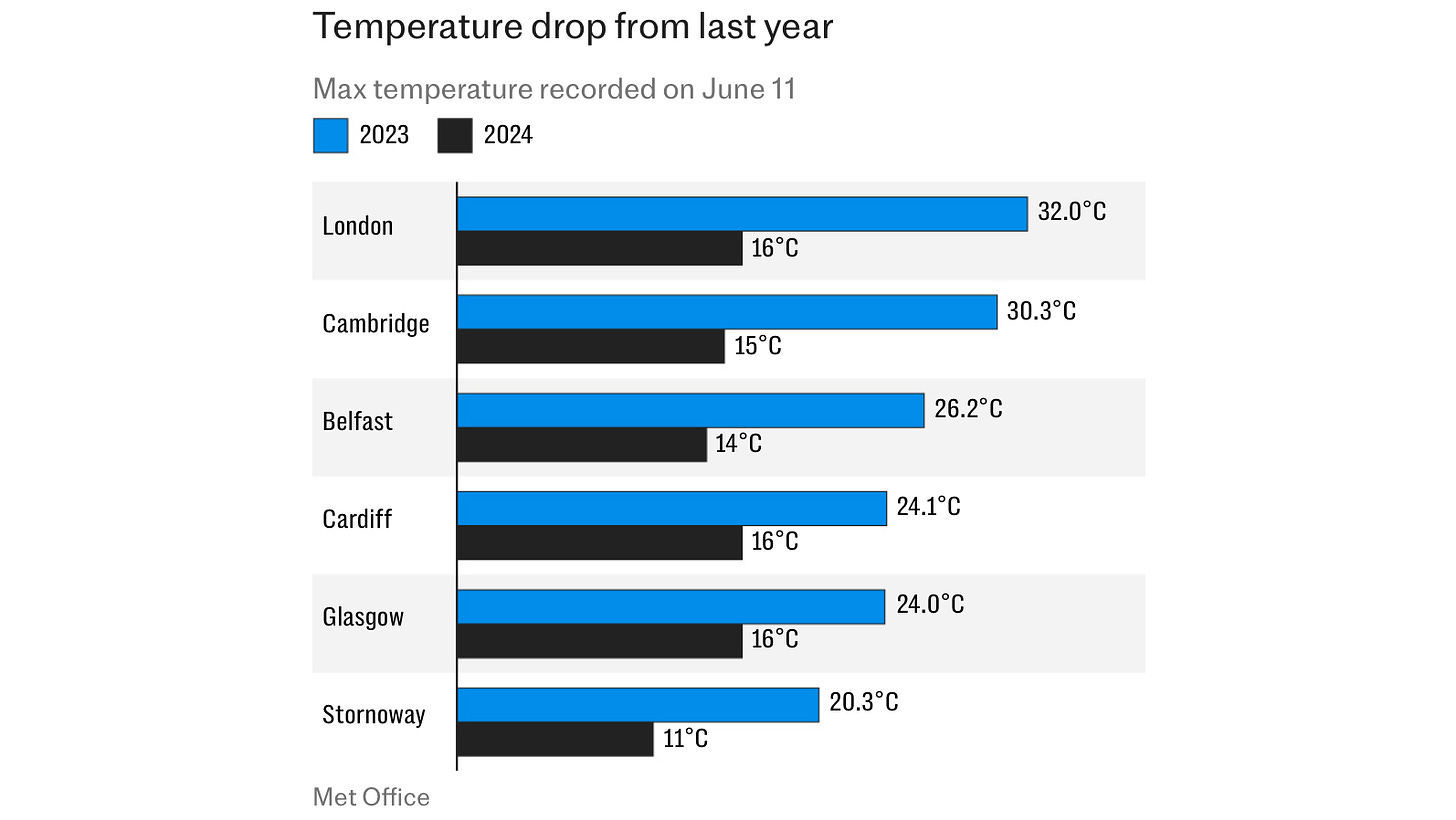You are using an out of date browser. It may not display this or other websites correctly.
You should upgrade or use an alternative browser.
You should upgrade or use an alternative browser.
Climate Hypocrisy
- Thread starter GURPS
- Start date
Biden unveils latest attempt to kill off gas cars in bid to force all Americans to switch to EVs by 2032
- New cars will have to average 65 miles a gallon within eight years - up 33%
- Comes after charge point roll-out was slammed as 'pathetic' by Dem Senator
Joe Biden has dealt another body blow to America's gas car manufacturers after his stuttering roll-out of EV charging points was slammed as 'pathetic'.
The Transportation Department told automakers they have eight years to squeeze another 16 miles per gallon out of their cars if they want to stay in business - while the fuel efficiency of their trucks will have to double.
Friday's edict came just weeks after the EPA slashed the limits on tailpipe emissions as part of the White House pledge to ensure that more than half of all new vehicles sold are electric by 2032.
But the administration admitted last week that just seven EV charging stations have been built since a $5-billion program was signed off in 2021.
'That's just pathetic,' Sen Jeff Merkley (D-Ore) told a Senate hearing on Wednesday. 'Something is terribly wrong and it needs to be fixed.'
The latest rules impose average miles per gallon limits across manufacturers' entire product lines, so if they make more electric vehicles they will find it easier to meet the targets.
Their passenger cars will have to average 65 miles per gallon by 2031, up from 48.7 miles today.
Pickup trucks and sport utility vehicles will have to average 45 miles rather than the 35.1 miles today.
But heavy-duty pickup trucks and large vans will have to nearly double their fuel efficiency from 18.8 to 35 miles per gallon.
The tough new regulations are designed to save nearly eight billion tons of carbon emissions by the middle of the century and have been welcomed by environmentalists and health campaigners.

The greenhouse effect from all that carbon dioxide, supposedly causing all the derechos, hailstorms, and hurricanes, keeps stubbornly failing to show up on the thermometer. So.

☕️ THE BLUE WALL ☙ Wednesday, June 12, 2024 ☙ C&C NEWS 🦠
Jury convicts Hunter and media starts smugness contest; June temps disappoint activists; 10th Circuit raises tough questions of body autonomy; WSJ reports fake science; Trump W's; and more.
Biden unveils latest attempt to kill off gas cars in bid to force all Americans to switch to EVs by 2032
- New cars will have to average 65 miles a gallon within eight years - up 33%
- Comes after charge point roll-out was slammed as 'pathetic' by Dem Senator
Ah what the hell... Just declare they need to meet 1,000,000 MPG by next year and get it over with.
Making rediculous policy, on stuff they dont' understand, ALWAYS makes things better.
Ah what the hell... Just declare they need to meet 1,000,000 MPG by next year and get it over with.
The smaller vehicles get, the less safe vehicles are

CLIP: Ten minutes of remarkable flooding footage from South Florida (10:15).
Hundreds or thousands of homes are underwater. House trailers are floating away. Schools are closed. Florida’s Department of Transportation is pumping water and rescuing stranded citizens. And West Florida has also started flooding, though not to quite the extent of what South Florida is going through.
I would (and do) ask for prayers for South Floridians, but it has been a year of nonstop flash floods, and in some very unusual times and places. In January, New Orleans unseasonally turned into jambalaya soup. In February, it was California’s turn, as San Diego sank under flash floods. In May, flash flooding even killed 500 people in dusty Afganistan. In April, record floods swamped the desert city of Dubai. This week, while South Floridians were swimming to work, over on the other side of the Atlantic, freak floods also plagued Spain.
The extreme weather is creating fertile ground for theories about the cause, since nobody’s offering a coherent explanation. Of course, they keep barking “climate,” but they aren’t even trying anymore to attach logic to the claim. I found the best example yet of what passes for science these days in one of the articles I reviewed:

See? No evidence, no problem! That is, so long as your theory is an approved narrative. So just remember to use the probable explanation exception the next time somebody tells you there was “no evidence” of widescale cheating in the 2020 elections.

☕️ TRUSTWORTHY ☙ Friday, June 14, 2024 ☙ C&C NEWS 🦠
A culture of corruption exposed at NIH; another one at Stanford; top spook infests Chatbot developer; Alex Jones flirts with bankruptcy liquidation; extreme weather floods the world; and more.
Recycling Plastic Is a Dangerous Waste of Time
Facilities that recycle plastic—known in the business as reclaimers—sort items by type and colour and then feed them into shredding and grinding machines, reducing them to small shards. Before being melted down to create recycled plastic, the shards are vigorously washed to remove dirt, labels, adhesives, and other foreign bodies. Reclaimers then filter this wash water and discharge it, into either open water sources or municipal water-treatment systems.
The process involves heavy machinery like knife mills that subject plastic items to enormous mechanical force, generating a lot of dust. It’s logical to hypothesise that this dust contains high levels of microplastics, usually defined as particles between five millimetres and one micron in diameter. (Particles smaller than one micron are considered nanoplastics.)
Enter Erina Brown, a young grad student at the University of Birmingham who wanted to use her recently earned Master of Sciences degree in Sustainability and Environmental Studies to investigate real-world problems. After the study she conceived and helmed briefly made her micro-famous last year, Brown described her philosophy as a scientist to a podcaster: “I think one of my bugbears is when academia stays solely within academia and doesn’t really leak into industry or public knowledge or anything.” So, she decided to investigate “the potential for a plastic recycling facility to release microplastic pollution and possible filtration remediation effectiveness.”
In interviews, Brown has repeatedly noted that she and her team were fortunate to have been granted admittance to the study site at all, because recyclers have a reputation for secrecy and distrust of outsiders (more about that in a moment). In exchange for access, the research team granted the UK reclaimer where the study took place anonymity, which to date it has maintained. By chance, the UK reclaimer—a relatively new, state-of-the-art facility—was upgrading its water filtration system at the time. So Brown’s team took MP samples from wash water discharge points both before and after the new installation.
Even with the new filtration system, the study found that the plant’s discharge water contained upwards of 75 billion particles of MPs per cubic metre, far exceeding the team’s expectations. To put these results into perspective, pre-filter, about 13 percent of all the plastic garbage entering the facility was leaving it via MPs in the wash water; post-filter, that figure was about six percent. Extrapolated yearly, that comes to 2,933 metric tons of MPs discharged pre-filter and 1,366 metric tons discharged post-filter.
More troubling was the size of the microplastics. The team measured for particles as small as 1.6 microns. In some samples, they found 95 percent of particles were under ten microns (the size of a human blood cell) and 85 percent were under five microns. Ingesting particles smaller than ten microns is known to be hazardous to marine life, and scientists believe it may pose risks to humans as well. Further, Brown believes that numerous particles smaller than 1.6 microns—many of which are nanoplastics—probably eluded measurement altogether. “We logically know—obviously we didn’t prove it in this study—but we logically know that there would be a lot of particles under 1.6 microns as well that didn’t show,” she told an interviewer.
Finally, the team found high levels of microplastics in the air inside the plant, and 61 percent of these particles were smaller than ten microns. Particles of this size can enter human lungs and cause disease, a problem that came to light about 20 years ago among workers in nylon flocking plants and became known as “flock worker’s lung.” Since neither the suspected nanoplastics nor the atmospheric MPs were included in the study’s total discharge volume, the authors believe the results probably represent an underestimate. “I was incredibly shocked,” Brown told the Guardian. “It’s scary because recycling has been designed in order to reduce the problem and protect the environment. This is a huge problem we’re creating.”
I would not be making any hard decisions on their gas mileage until after the election. I have a feeling there may be some changes in the EPA and other agencies.
Yeah Biden has just issued much more stringent mpg
Biggest Non-Secret Out of Secret Recording Leak Ever: Labour's NetZero Plans to Cost Britain Bigly
Labour was taking hit after hit on their Green fever dreams...
Make no mistake, it has to happen.
As it stands, Keir Starmer will be in power in nine days. And while for now he may be swallowing Ed Miliband’s mad eco zealotry, even a big Labour majority will not overcome reality.
Private sales of battery cars are falling. Many disillusioned owners are selling up and reverting to petrol, diesel or hybrid. Absurd prices, feeble mileage ranges and lack of public chargers are all proving too much. Only company fleets are propping up the market.
Yet Labour is doubling-down on the Tories’ demand that manufacturers ensure 22 per cent of new cars sold are zero-emission this year, rising to 80 per cent by 2030. They will face punitive fines if they fail.
...and Britons have already been paying the NetZero piper.
...Britain has been going down this path since 2008, when Parliament wrote an 80 percent decarbonization target into law, which it raised to 100 percent, or net zero, in 2019. This luxury net-zero policy, which only the rich can afford, has been devastating for both businesses and ordinary Britons just trying to heat their homes and get to work.
...In 2020, even before the recent surge in energy costs, everyday Britons were paying about 75 percent more for electricity than Americans, the result of a double whammy—cap-and-trade policies on the one hand and renewable subsidies on the other. And then came the Ukraine shock. During the 2022 energy crisis, electricity rates for British businesses were more than double the average paid by U.S. businesses.
In Britain, the impact of cap-and-trade on the cost of fuel to generate electricity is massive. In 2022, government-imposed carbon costs averaged $128 per megawatt hour (MWh) for coal-generated electricity and $51 per MWh for natural gas. Those costs are on top of actual fuel costs, which averaged $150 per MWh for electricity generated from coal and $160 per MWh for natural gas. These mean that it cost $278 to generate 1 MWh of electricity from coal and $211 from natural gas.
...So in the U.S., the fuel cost per MWh of electricity generated from coal was $27 per MWh (versus $278 in Britain) and $61 per MWh for natural gas (versus $211 in Britain).
Britons also have to pay the cost of subsidizing politically favored wind and solar. Analysis of the renewable portfolios of Britain’s Big Six energy companies shows that the average price for wind- and solar-generated electricity between 2009 and 2020 was well over £100 per MWh, whereas the price for reliable electricity from gas- and coal-fired power stations fell from £60 per MWh in 2013 to less than £50 per MWh in 2020.
How much more did they have to give up before the planet was saved?
£28 billion per year was the original figure, but supposedly that had been winnowed down significantly. Or so the Labour bosses asserted in public.
In private, it was a very different story and where all the current red faces are coming in.
Reaching Labour’s target for decarbonising the economy will cost “hundreds of billions” of pounds, a shadow minister has disclosed in a recording obtained by The Telegraph.
Darren Jones, the shadow chief secretary to the Treasury, said the £28 billion per year originally allocated to Labour’s green investment plan was a “tiny” amount.
He said the fact that Sir Keir Starmer had downgraded his investment plans from £28 billion to £4.7 billion “made it sound as if we basically junked the whole thing but we definitely haven’t”.
Mr Jones told a public meeting in Bristol that private capital would have to be used to upgrade infrastructure, but “public subsidy” would still be needed alongside that.
His comments are set to reignite the row over Labour’s spending plans.
And it's all on tape.
